InfluxDB 3 Enterprise
High-performance time series database.
Start fast, scale faster.
InfluxDB 3 Enterprise is a high availability, fully-featured database that runs in a single node.
Download NowInfluxDB 3 Enterprise
High-performance time series database.
Start fast, scale faster.
InfluxDB 3 Enterprise is a high availability, fully-featured database that runs in a single node.
Download NowRun a Proof of Concept
Start a Proof of Concept
Engineered for performance. Designed for flexibility.
Deploy Anywhere
Run any workloads on bare metal, VMs, or Kubernetes
Built-in Processing Engine
Embedded Python for real-time analysis and advanced data transformation
Powerful Real-Time Performance
Scale to billions of data points without impacting performance
Built for developers, from startup to scale-up
Scalability, security, and high availability, all in a single node
Enterprise-Grade Scalability
- High availability
- Read replicas
- Seamless performance and scalability
- Long-range data compaction saves on storage costs
- Query the latest values in <10ms with Last Value Cache
Fine-Grained Security
- End-to-end encryption
- SOC 2, ISO 27001, and ISO 27018 certified
- Powerful access controls and advanced tokenization all coming soon
Easy Integration with the Tools You Love
- Native SQL
- Built to work seamlessly with AI/ML tools
- Instantly integrate with AI tools for natural language query. Learn More
- Detect and respond to anomalies in real-time
- Simple integration, powered by Telegraf, our popular open source data connector with 5B+ downloads
- Simple migration from InfluxDB 1.x and 2x to InfluxDB 3 Enterprise. Learn More
Built-in intelligence with the InfluxDB 3 Processing Engine
Run custom Python directly in InfluxDB 3. Turn your database into an active intelligence layer, transforming, enriching, and responding to streaming data in real-time—without external services or pipelines.
Learn More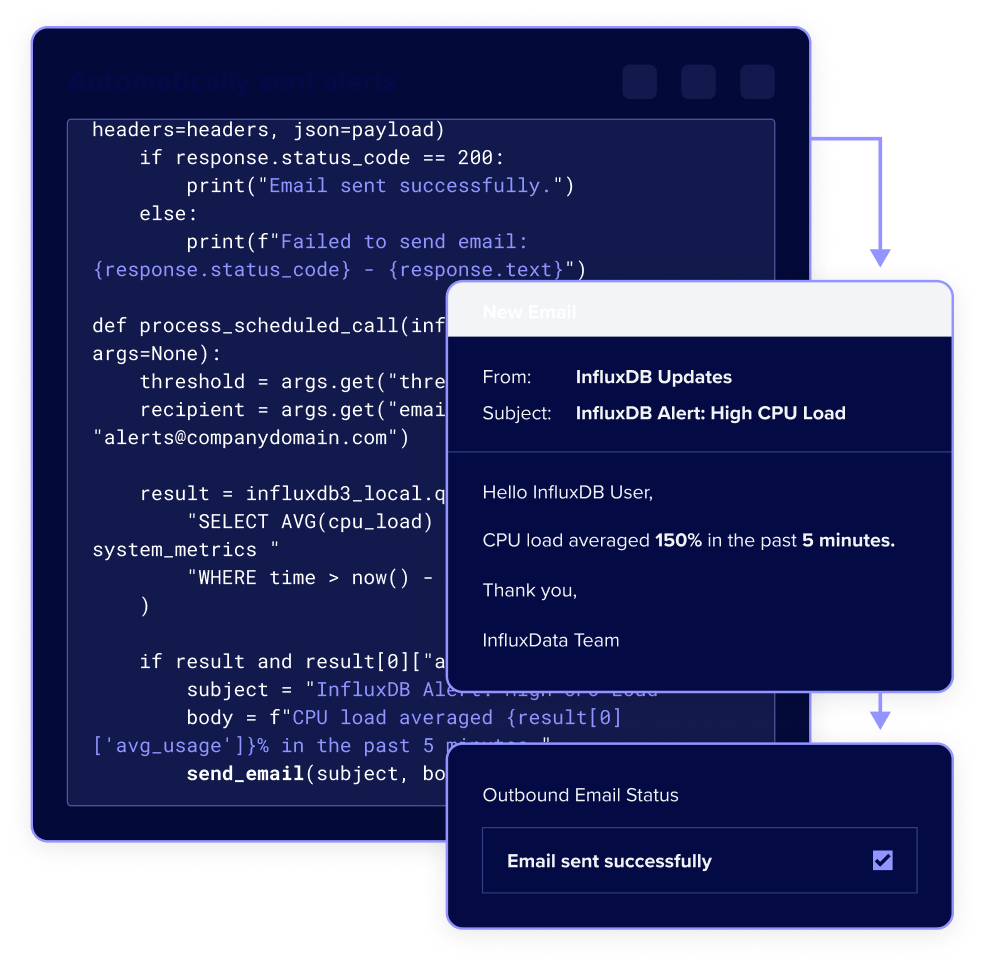
Unlock the power of InfluxDB 3—instantly
High-Speed Ingest
Ingest billions of series with fewer CPUs and less RAM
Real-Time Querying
Query across any time range–from real-time to historical data analysis
Unlimited Cardinality
Ingest, transform, and query unlimited time series with unmatched speed and flexibility
Low-Cost Object Storage
Best-in-class compression and Parquet files store more data with less space
Seamless Integration
Integrate with the tools you love via Python-based plugin systems
Native SQL
Analyze data using simple SQL or InfluxQL, a SQL-like language for time series data
Slash storage costs by up to 90% with InfluxDB 3
InfluxDB 3 separates compute from storage, allowing efficient management of both active and historical data. With compressed Parquet files and storage in Amazon S3, it reduces storage footprints up to 4.5x, delivering massive cost savings without impacting performance.
Built for developers, from startup to scale-up
Scalability, security, and high availability, all in a single node
Download NowEnterprise-Grade Scalability
- High Availability
- Read replicas
- Seamless performance & scalability
- Long-range data compaction saves on storage costs
- Query the latest values in <10ms with Last Value Cache
Fine-Grained Security
- End-to-end encryption
- SOC 2, ISO 27001, and ISO 27018 certified
- Powerful access controls & advanced tokenization all coming soon
Easy Integration with the Tools You Love
- Native SQL
- Built to work seamlessly with AI/ML tools
- Detect & respond to anomalies in real-time
- Simple integration, powered by Telegraf, our popular open source data connector with 5B+ downloads
- Simple migration from InfluxDB 1.x & 2x to InfluxDB 3 Enterprise. Learn More
Open data standards drive performance and interoperability
InfluxDB 3 is built in Rust and the FDAP stack—Flight, DataFusion, Arrow, and Parquet—leveraging Apache-backed technologies to efficiently ingest, store, and analyze time series data at any scale.
Try InfluxDBF
Flight for efficient columnar data transfer

D
DataFusion for high-performance querying
A
Arrow for optimized in-memory columnar analytics

P
Parquet for high-compression storage
Explore the new InfluxDB 3 UI
A built-in UI to query, manage, and visualize your time series data—without the complexity
Try InfluxDB Try InfluxDB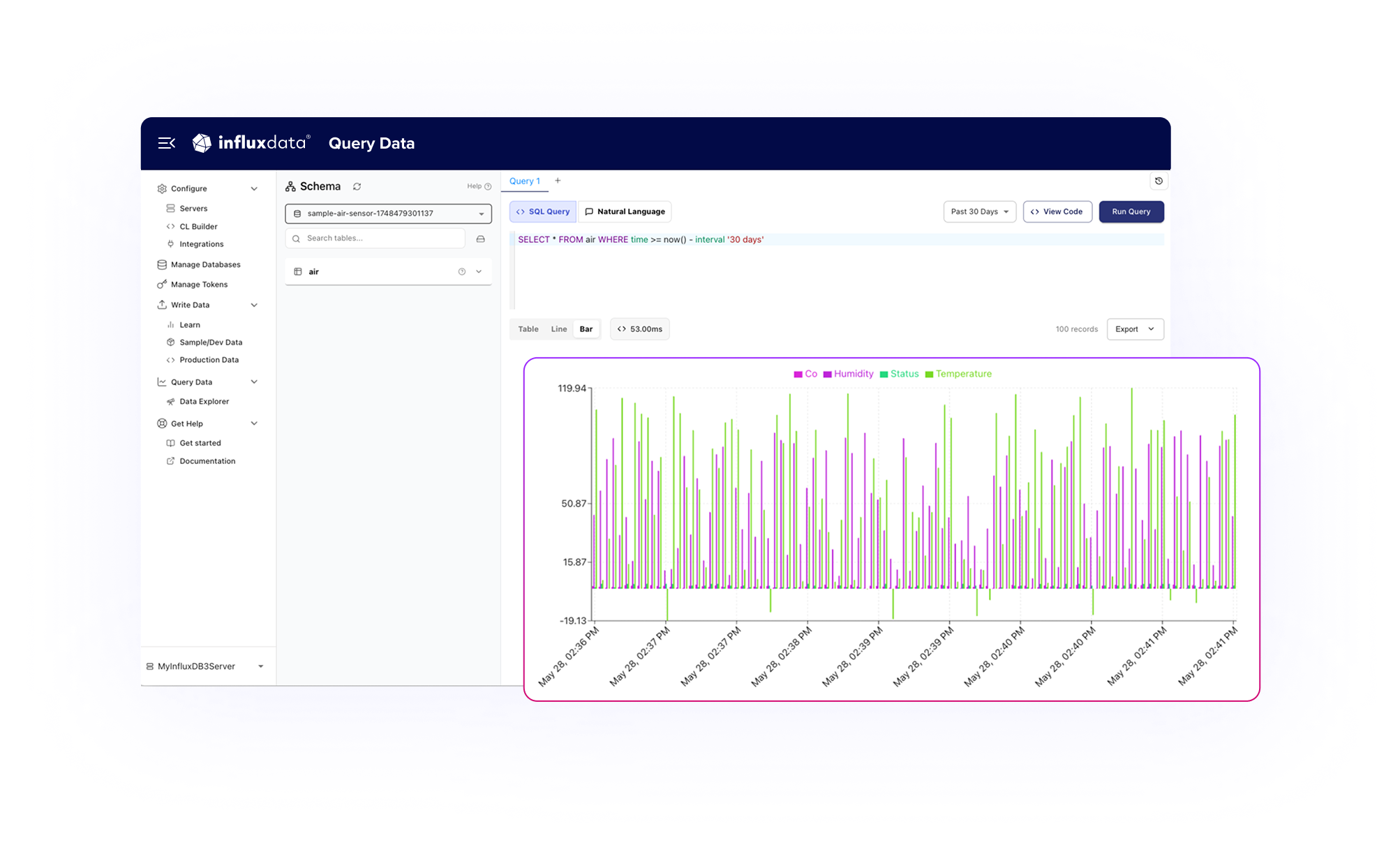
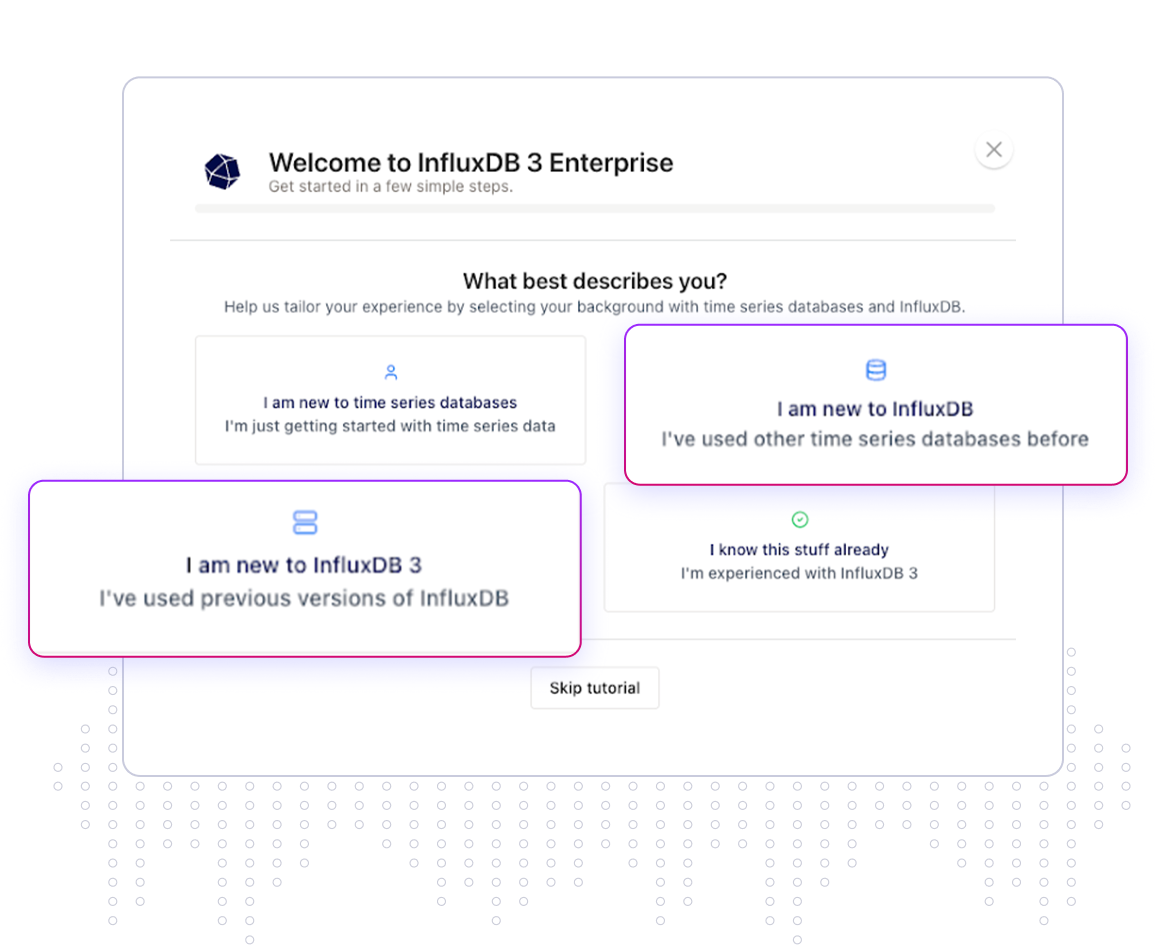
Personalized onboarding
Get started your way
Explorer offers a personalized onboarding experience tailored to your level of expertise—whether you're new to time series or already familiar with InfluxDB 3. Get up started in minutes with just the guidance you need.
Configuration & Management
Handle routine tasks, minus the friction
Explorer makes it easy to handle everyday admin tasks—like creating databases, managing tokens, and generating server commands—without writing a single line of code.
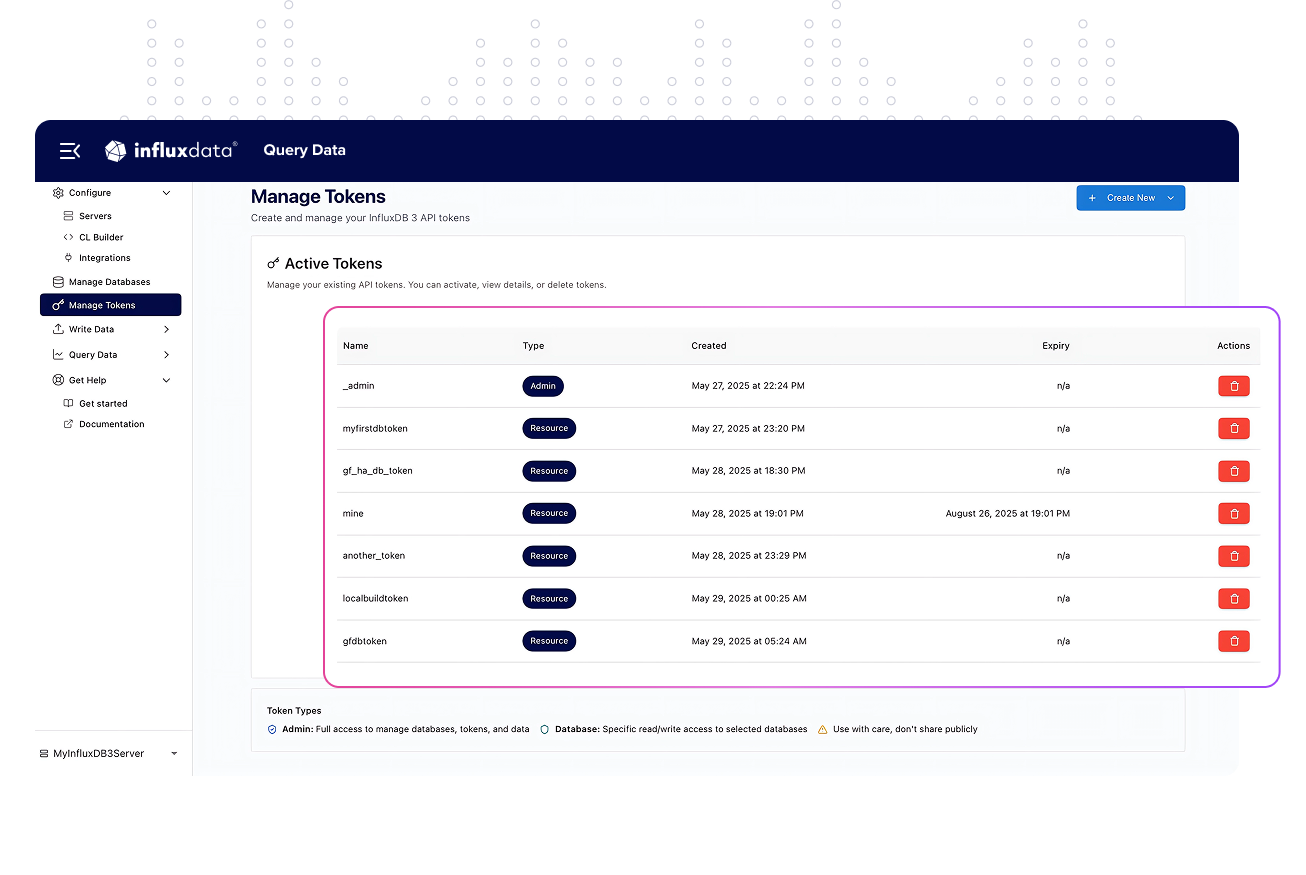

Visualize your data instantly
Query, explore, and visualize—faster
Run SQL or natural-language queries for instant answers. Easily explore your schema and visualize trends, turning high-volume time series streams into real-time decisions.
Designed to scale. Built to adapt.
InfluxDB 3 Enterprise is built on a cloud-native, diskless architecture that removes the limits of traditional storage. It’s easy to deploy, scales effortlessly, and cuts out the complexity of managing clusters. Its stateless design keeps operations simple and adapts to any environment.
Download Now Run Proof of Concept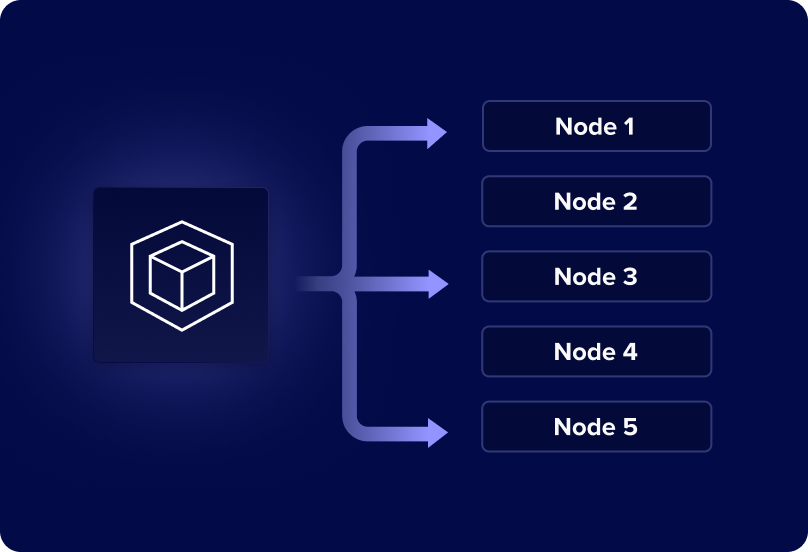
Scale Seamlessly
Separation of compute from storage enables seamless scaling. Easily add new nodes without friction or disruption.
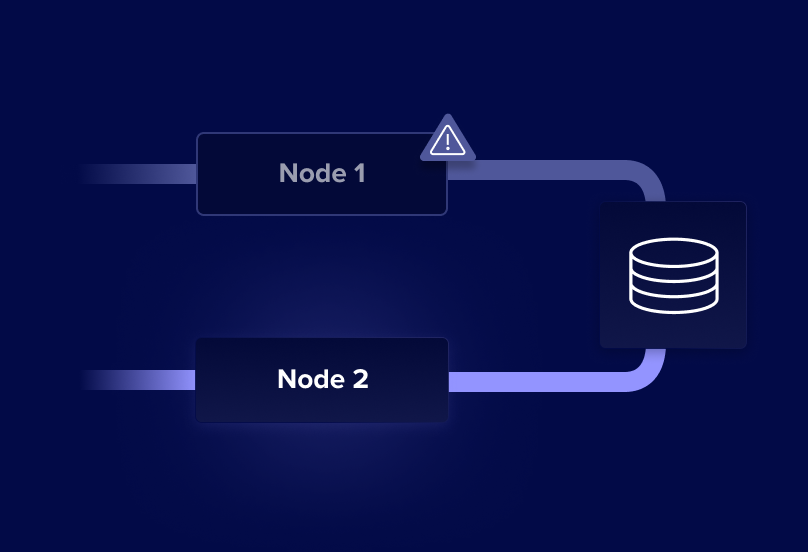
High Availability, Low Overhead
Instant Failover: Nodes share a single object store—if one fails, another picks up with zero data loss or downtime.
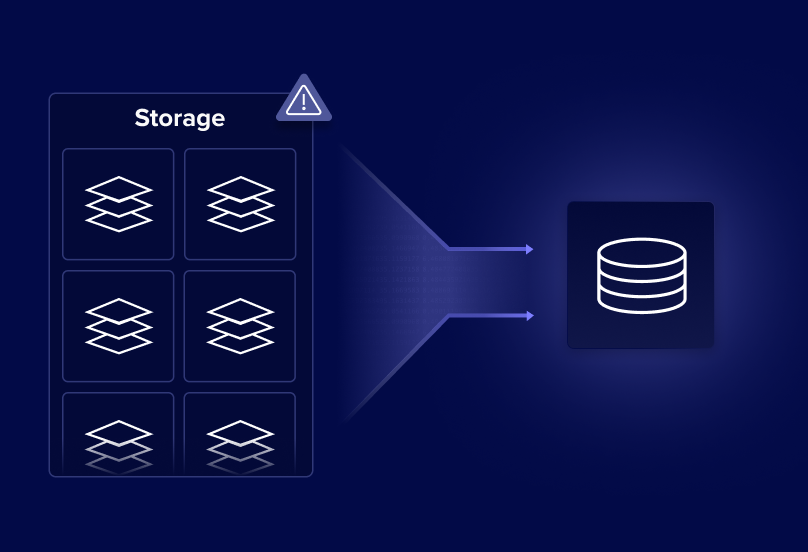
Petabyte Storage, Simplified
Eliminate existing storage limits with persistent object storage. Ingest unlimited data and retain it for as long as you need, without re-architecting your system.
Start building today

< GETTING STARTED >
GA Launch: InfluxDB 3 Core and InfluxDB 3 Enterprise
Start fast, scale faster. Now generally available, take a tour and install InfluxDB 3 Core or InfluxDB 3 Enterprise in seconds.
Join WebinarInfluxDB 3 Core
Easily install for Linux, Mac, RHEL, Docker:
curl -O https://www.influxdata.com/d/install_influxdb3.sh && sh install_influxdb3.sh
Or install on Windows and more
Register your download for access to the new InfluxDB Open Source Software Onboarding Guide, and product updates.
Trial for Free
Start free with self-managed, our most popular setup.
Easily install for Linux, Mac, RHEL, Docker:
curl -O https://www.influxdata.com/d/install_influxdb3.sh && sh install_influxdb3.sh enterprise
For Windows installation, see the Getting Started Guide.
By default, trials are 30 days. Need more time? We can help extend it. Contact Us.


